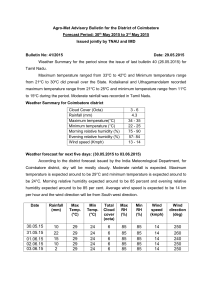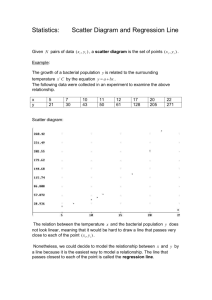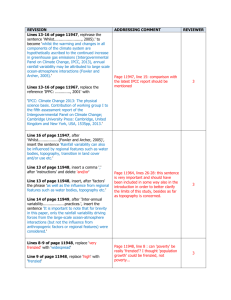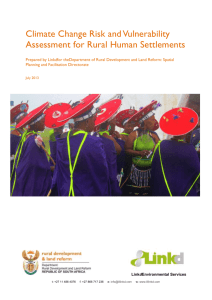seasonal rainfall variability and aptness of geographical
advertisement
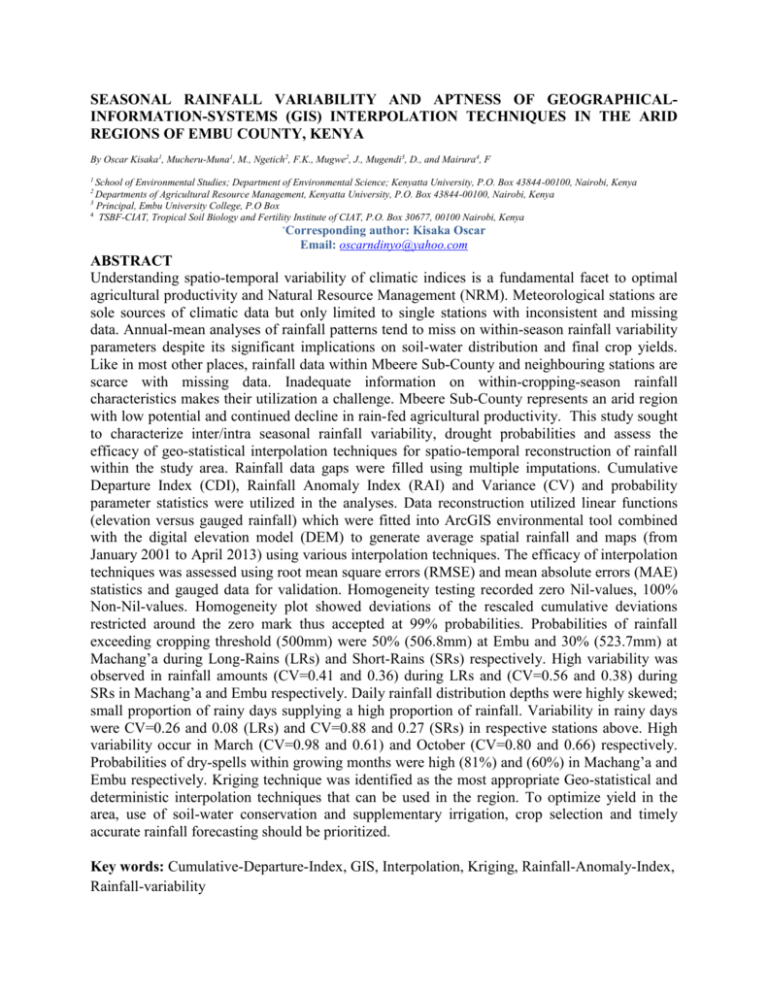
SEASONAL RAINFALL VARIABILITY AND APTNESS OF GEOGRAPHICALINFORMATION-SYSTEMS (GIS) INTERPOLATION TECHNIQUES IN THE ARID REGIONS OF EMBU COUNTY, KENYA By Oscar Kisaka1, Mucheru-Muna1, M., Ngetich2, F.K., Mugwe2, J., Mugendi3, D., and Mairura4, F 1 School of Environmental Studies; Department of Environmental Science; Kenyatta University, P.O. Box 43844-00100, Nairobi, Kenya Departments of Agricultural Resource Management, Kenyatta University, P.O. Box 43844-00100, Nairobi, Kenya Principal, Embu University College, P.O Box 4 TSBF-CIAT, Tropical Soil Biology and Fertility Institute of CIAT, P.O. Box 30677, 00100 Nairobi, Kenya 2 3 Corresponding author: Kisaka Oscar Email: oscarndinyo@yahoo.com * ABSTRACT Understanding spatio-temporal variability of climatic indices is a fundamental facet to optimal agricultural productivity and Natural Resource Management (NRM). Meteorological stations are sole sources of climatic data but only limited to single stations with inconsistent and missing data. Annual-mean analyses of rainfall patterns tend to miss on within-season rainfall variability parameters despite its significant implications on soil-water distribution and final crop yields. Like in most other places, rainfall data within Mbeere Sub-County and neighbouring stations are scarce with missing data. Inadequate information on within-cropping-season rainfall characteristics makes their utilization a challenge. Mbeere Sub-County represents an arid region with low potential and continued decline in rain-fed agricultural productivity. This study sought to characterize inter/intra seasonal rainfall variability, drought probabilities and assess the efficacy of geo-statistical interpolation techniques for spatio-temporal reconstruction of rainfall within the study area. Rainfall data gaps were filled using multiple imputations. Cumulative Departure Index (CDI), Rainfall Anomaly Index (RAI) and Variance (CV) and probability parameter statistics were utilized in the analyses. Data reconstruction utilized linear functions (elevation versus gauged rainfall) which were fitted into ArcGIS environmental tool combined with the digital elevation model (DEM) to generate average spatial rainfall and maps (from January 2001 to April 2013) using various interpolation techniques. The efficacy of interpolation techniques was assessed using root mean square errors (RMSE) and mean absolute errors (MAE) statistics and gauged data for validation. Homogeneity testing recorded zero Nil-values, 100% Non-Nil-values. Homogeneity plot showed deviations of the rescaled cumulative deviations restricted around the zero mark thus accepted at 99% probabilities. Probabilities of rainfall exceeding cropping threshold (500mm) were 50% (506.8mm) at Embu and 30% (523.7mm) at Machang’a during Long-Rains (LRs) and Short-Rains (SRs) respectively. High variability was observed in rainfall amounts (CV=0.41 and 0.36) during LRs and (CV=0.56 and 0.38) during SRs in Machang’a and Embu respectively. Daily rainfall distribution depths were highly skewed; small proportion of rainy days supplying a high proportion of rainfall. Variability in rainy days were CV=0.26 and 0.08 (LRs) and CV=0.88 and 0.27 (SRs) in respective stations above. High variability occur in March (CV=0.98 and 0.61) and October (CV=0.80 and 0.66) respectively. Probabilities of dry-spells within growing months were high (81%) and (60%) in Machang’a and Embu respectively. Kriging technique was identified as the most appropriate Geo-statistical and deterministic interpolation techniques that can be used in the region. To optimize yield in the area, use of soil-water conservation and supplementary irrigation, crop selection and timely accurate rainfall forecasting should be prioritized. Key words: Cumulative-Departure-Index, GIS, Interpolation, Kriging, Rainfall-Anomaly-Index, Rainfall-variability



